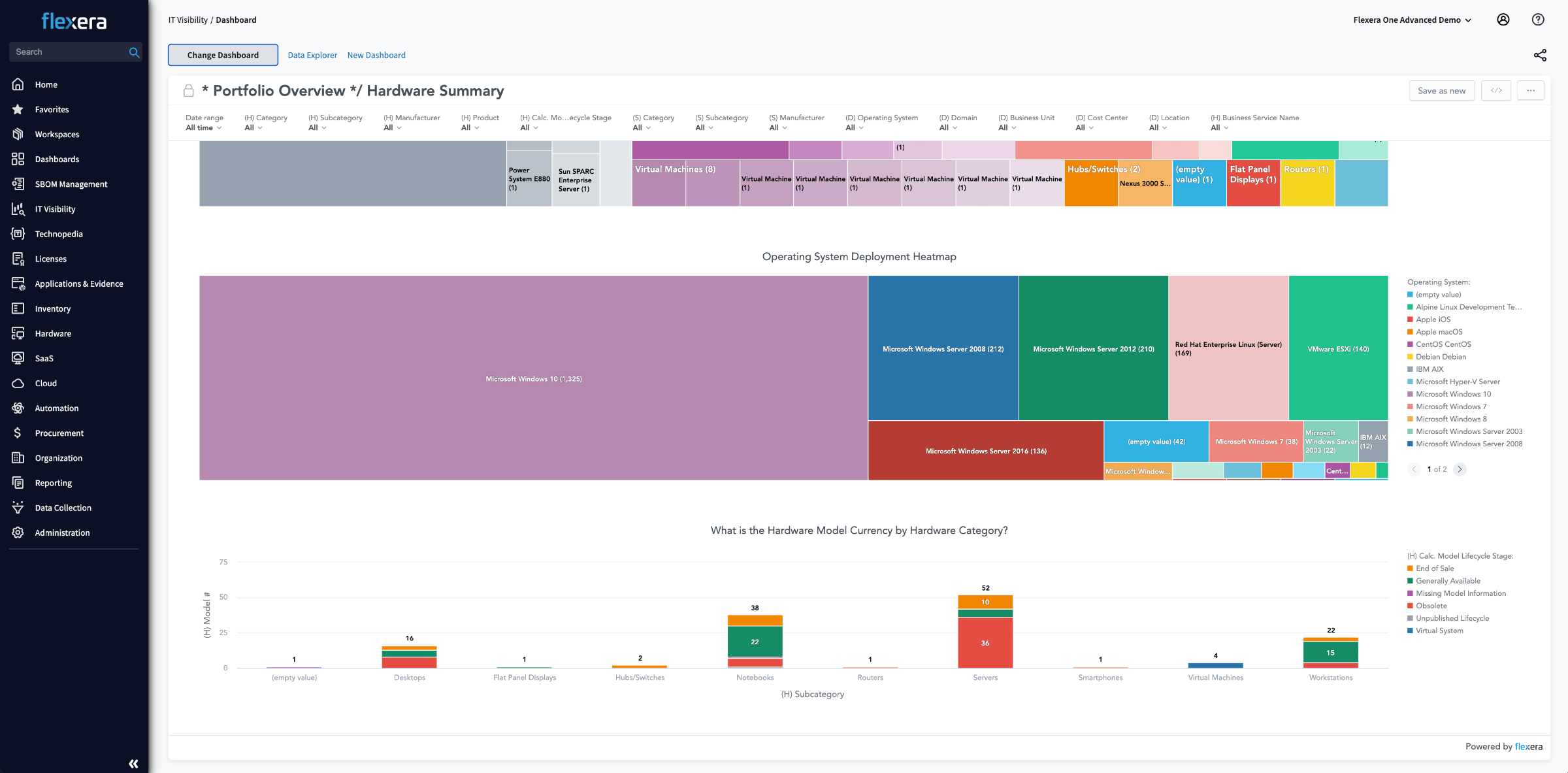Hardware-Lifecycle-Management
Hardware-Lifecycle-Management
Steigern Sie den Mehrwert Ihrer Hardwareinvestitionen, und treffen Sie wichtige Entscheidungen rund um Lebenszyklus, Migration und Modernisierung von Hardware. Flexera stellt Ihnen dafür zuverlässige Daten von Technopedia bereit, der größten und umfangreichsten Quelle für IT-Daten.
Überlegene Hardwaredaten für Ihr IT-Ökosystem
Simplify hardware discovery
Erkennung und Kontextualisierung
Flexera erkennt, inventarisiert und verfolgt Hardware über den gesamten Lebenszyklus hinweg und auch bei Verlagerung innerhalb Ihrer Umgebung. Wenn Sie bereits über ein Inventarisierungstool verfügen, kann Flexera One zur Normierung und Optimierung von Daten mit diesem integriert werden. So können Sie Ihren Bestand mit zusätzlichen Einblicken zu Benutzern, Geschäftseinheit, Rolle und Garantieablaufdaten visualisieren.
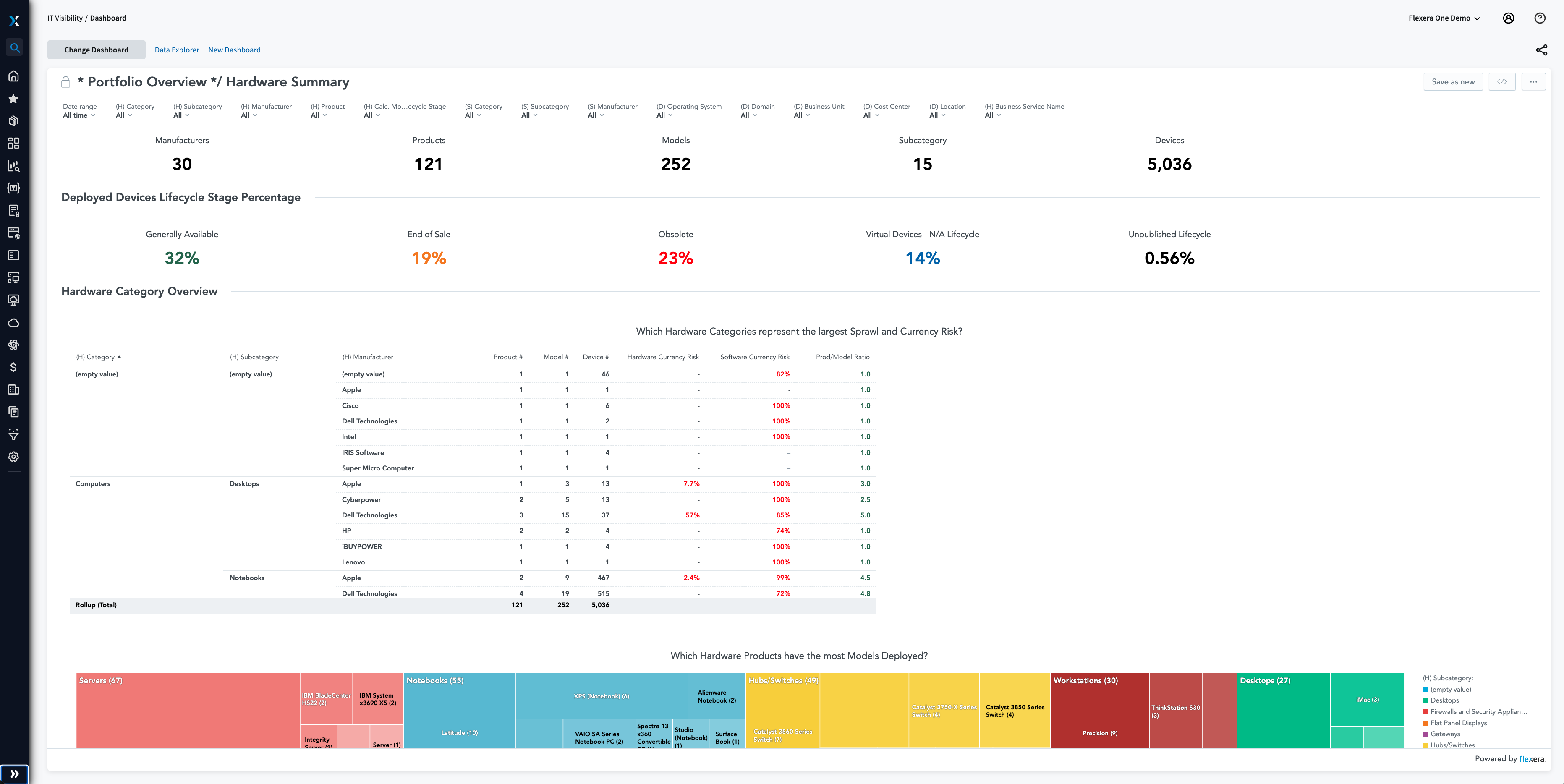
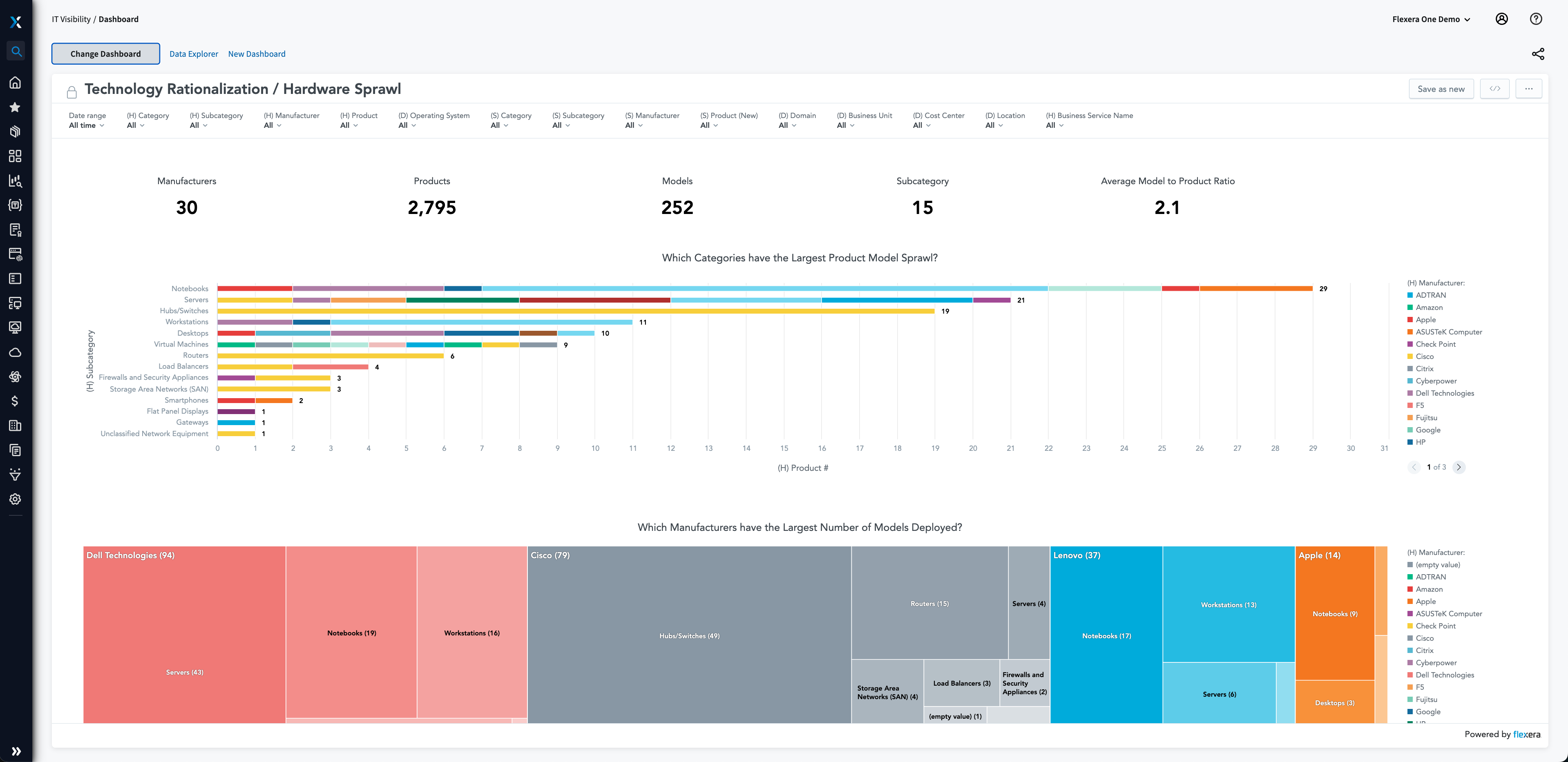
Identify and optimize
Priorisierung von Hardwareupdates für bessere Performance
Hardwareassets, deren End of Life (EOL) kurz bevorsteht oder bereits erreicht ist, sollten Sie möglichst schnell identifizieren, da sie Schwachstellen darstellen. Durch schnelle Ermittlung von EOL- und Hardwareassets können Sie die operative Performance optimieren.
Stay in compliance
Stets aktuelles Technologieportfolio
Ermitteln Sie, welche Hardwareassets den EOL- und EOS-Daten von Technopedia entsprechen. Untersuchen Sie Ihren Unternehmensbestand auf unbekannte Hardwareassets, die gegen die interne Compliance verstoßen, um Upgrades, Modernisierung und erweiterte Supportkosten einkalkulieren zu können.
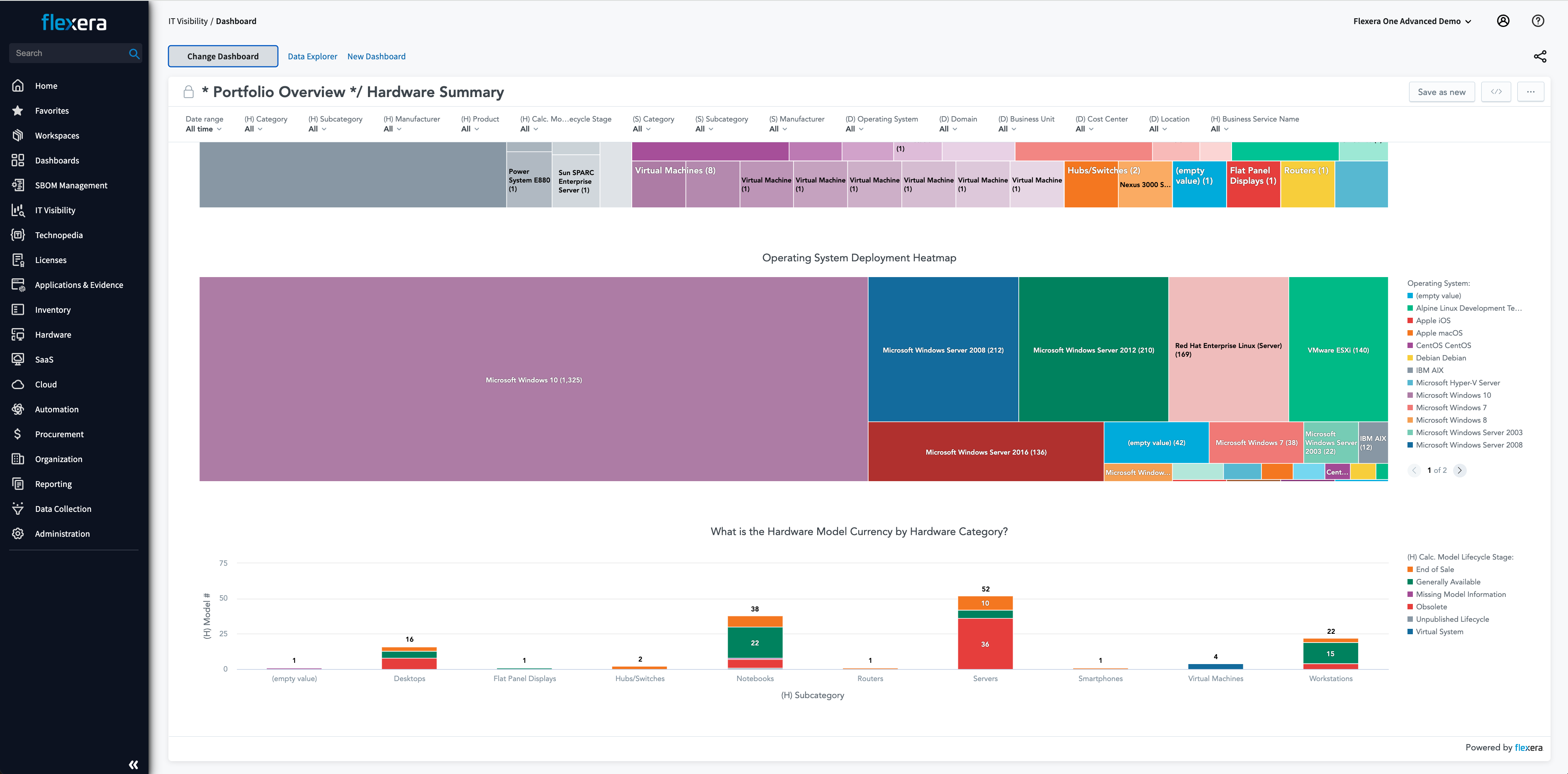
Drive business success
Technischen Schulden immer einen Schritt voraus
Abschließend lässt sich sagen, dass es für Unternehmen schwerwiegende Folgen haben kann, wenn sie es versäumen, technische Schulden zu eliminieren und die Obsoleszenz zu überwachen. Ob finanzielle Verluste, Sicherheitsvorfälle oder Produktivitätseinbußen – die Risiken sind enorm. Unternehmen müssen die Überwachung und den Abbau technischer Schulden und Obsoleszenz in Ihrem weitläufigen Bestand priorisieren und die Kontrolle über die unzähligen IT-Ressourcen darin stärken. Auf diese Weise können Risiken verringert und der Geschäftserfolg gefördert werden. Um wettbewerbsfähig zu bleiben, sind Investitionen in moderne Technologie, fortlaufende Wartung und Upgrades entscheidend.
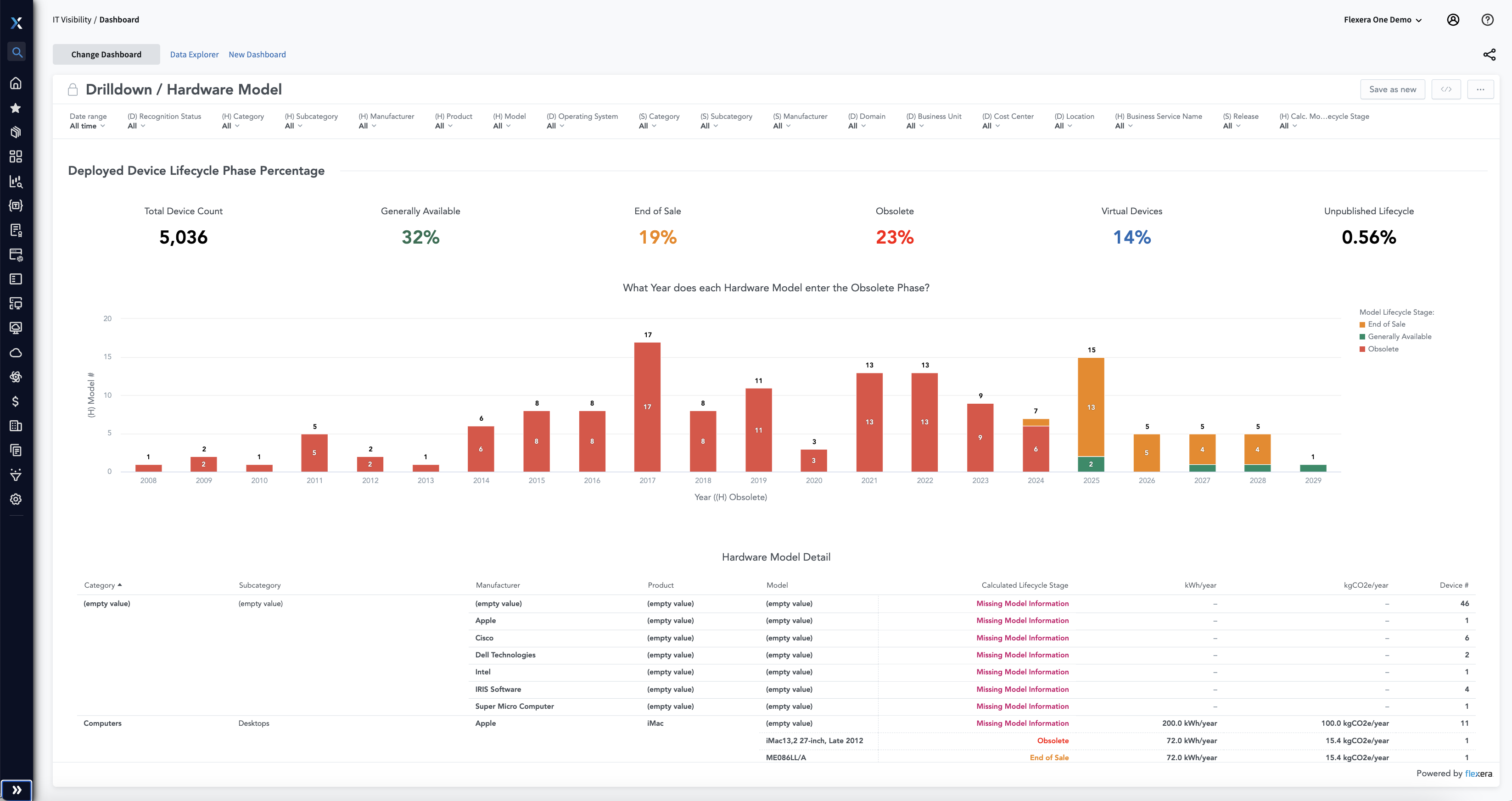
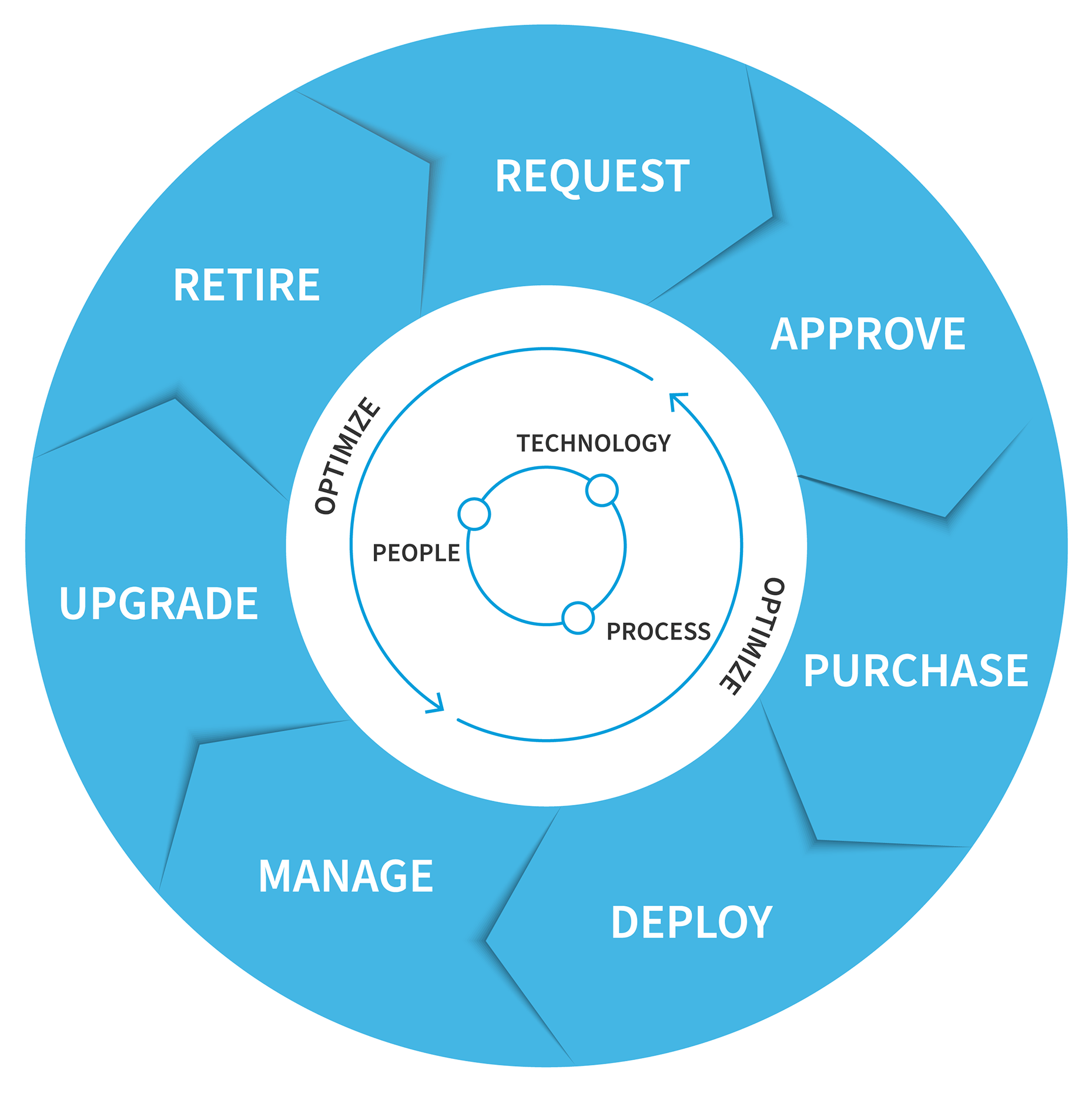
Best Practices für das Lifecycle-Management Ihrer Hardware
Um ITAM-Investitionen bestmöglich zu nutzen, sollten Sie sich auf Best Practices für das IT-Asset-Management stützen. Diese sehen einen Lifecycle-Ansatz für die Implementierung vor: Planung, Kauf, Nutzung, Wartung und Verlängerung oder Stilllegung. Mit Flexera ist Ihr Unternehmens besser aufgestellt, um die Ausbreitung des Hardwarebestands zu bewältigen. Jede einzelne Komponente wird erfasst und verfolgt, sodass Kosten gesenkt, Risiken reduziert und IT-Investitionen optimal genutzt werden können.
[Mit Flexera] nutzen wir z. B. Daten über unsere Netzwerkgeräte für Produktionssysteme, um das Alter dieser Geräte und potenzielle Schwachstellen im Blick zu behalten und so Ausfälle von Produktionssystemen in wichtigen Netzwerkbereichen zu vermeiden.
Häufig gestellte Fragen (FAQs)
Technische Schulden sind die Kosten für Wartung und Support veralteter Technologie über das Produktlebensende (EOL) hinaus. Das kann zu erheblichen Kosten und Sicherheitsrisiken führen, da obsolete Soft- und Hardware anfälliger für Schwachstellen und Cyberangriffe ist. Darüber hinaus kann die Nutzung veralteter Technologien zu Produktivitäts- und Effizienzeinbußen führen, da Mitarbeiter viel Zeit für schwerfällige und langsame Systeme aufwenden müssen.
Nicht alle technischen Schulden sind mit dem gleichen Risiko behaftet. Um kritische Produktionssysteme ausmachen zu können, müssen die Services, an die sie gebunden sind, entsprechend geprüft werden. Hier einige Beispiele aus unterschiedlichen Branchen:
Gesundheitswesen: Elektronische Patientenaktensysteme (ePA) für das Management von Patientendaten und die klinische Entscheidungsfindung
Einzelhandel: Lieferkettenmanagementsysteme für die Nachverfolgung und Verwaltung von Lagerbeständen, Bestellungen und Herstellerbeziehungen
Fertigung: CNC-Maschinen für die Präzisionsherstellung und Qualitätssicherung
Finanzdienstleistungen: Handelssysteme zur Verarbeitung und Analyse von Finanzdaten in Echtzeit
Transportwesen: Flugsicherungssysteme für das Management und die Überwachung von Flügen zur Gewährleistung von Sicherheit und Effizienz
Energiesektor: SCADA-Systeme (Supervisory Control and Data Acquisition) zur Überwachung und Steuerung der Energieerzeugung, -übertragung und -verteilung
Telekommunikation: Network Operations Centers (NOCs) zur Überwachung und Wartung der Netzwerkinfrastruktur, die den unterbrechungsfreien Service für Kunden sicherstellen
Inform IT. Transform IT.
Informative Brancheneinblicke
Effizientes Hardware-Lifecycle-Management
Investieren Sie genau in die Hardware, die Ihr Unternehmen braucht.

